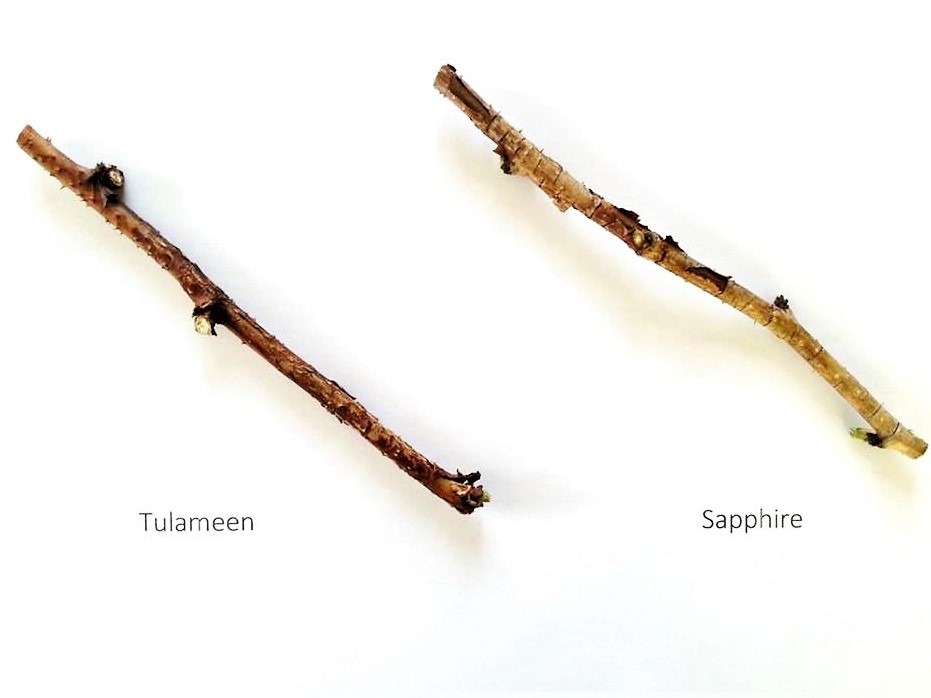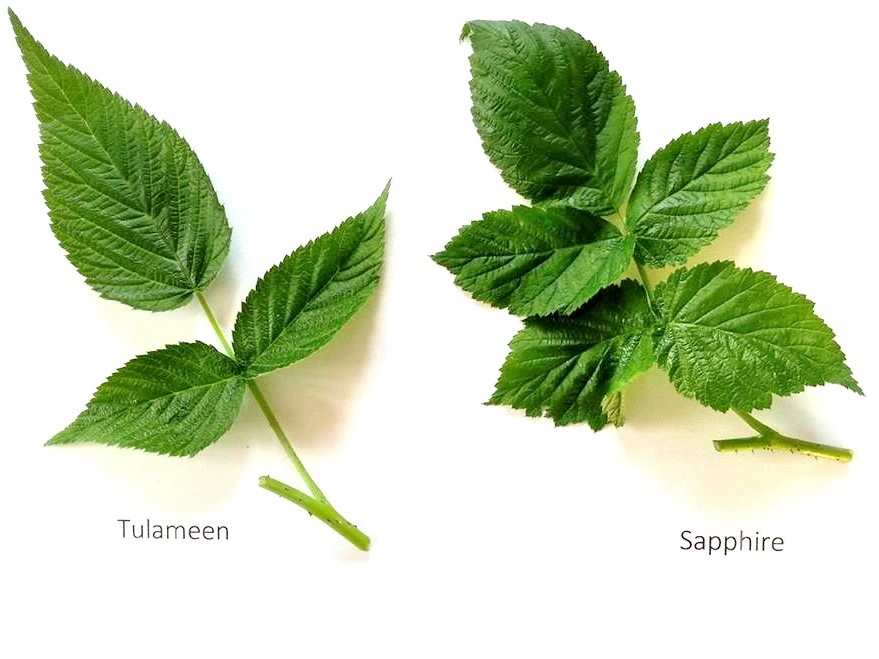Sapphire
| Denomination: | 'Sapphire' |
|---|---|
| Botanical Name: | Rubus idaeus |
| Applicant/Holder: |
Berryworld Plus Limited Turnford Place Great Cambridge Road Turnford Broxbourne, Hertfordshire EN10 GNH United Kingdom |
| Breeder: |
Eva McCarthy, Edward Vinson Limited, Faversham, Kent, Egypt |
| Agent in Canada: |
Smart & Biggar LP P.O. Box 2999, Station D 55 Metcalfe Street, Suite 900 Ottawa, Ontario K1P 5Y6 Canada Tel: 613-235-4373 |
| Application Date: | 2016-01-05 |
| Provisional Protection:: | 2016-01-05 |
| Application Number: | 16-8782 |
| Grant of Rights Date: | 2018-11-16 |
| Certificate Number: | 5840 |
| Exemption from compulsory licensing: | Yes |
| Expiry date for exemption from compulsory licensing: | 2020-11-16 |
| Grant of Rights Termination Date: | 2038-11-16 |
Variety Description
Variety used for comparison: 'Tulameen'
Summary: The plant growth habit of 'Sapphire' is semi-upright whereas the plant growth habit of 'Tulameen' is upright. The plants of 'Sapphire' have few current season canes whereas the plants of 'Tulameen' have many current season canes. The dormant cane of 'Sapphire' is shorter than the dormant cane of 'Tulameen'. The colour of the dormant cane of 'Sapphire' is greyish brown whereas the dormant cane of 'Tulameen' is brown. The upper side of the leaf of 'Sapphire' is medium green whereas the leaf of 'Tulameen' is light green. The predominant number of leaflets per leaf is five for 'Sapphire' whereas the predominant number of leaflets per leaf is three for 'Tulameen'. The leaf of 'Sapphire' has weak rugosity whereas the leaf of 'Tulameen' has a medium degree of rugosity. The number of spines on the pedicel of 'Sapphire' is medium whereas the number of spines on the pedicel of 'Tulameen' is absent or very few. The intensity of anthocyanin colouration of the peduncle is absent for 'Sapphire' whereas the intensity is weak for 'Tulameen'. The flower of 'Sapphire' is medium sized whereas the flower of 'Tulameen' is small. The fruit of 'Sapphire' is long and broad whereas the fruit of 'Tulameen' is of medium length and medium width. The fruit of 'Sapphire' is firm whereas the fruit of 'Tulameen' is of medium firmness. On the previous season's cane, flowering and fruit ripening begin mid-season for 'Sapphire' whereas flowering and fruit ripening begin early for 'Tulameen'. On the current season's cane, fruit ripening begins early for 'Sapphire' whereas fruit ripening begins mid-season for 'Tulameen'.
Description:
PLANT: semi-upright growth habit, few current season shoots, mainly bears fruit on previous season's cane in summer only, vegetative bud burst occurs mid-season
VERY YOUNG SHOOT: no anthocyanin colouration of apex during rapid growth
CURRENT SEASON'S CANE: emerges early to mid-season, absent or very weak degree of glaucosity, absent or very weak intensity of anthocyanin colouration, short internode
PREVIOUS SEASON'S CANE: medium length, greyish brown
SPINES: sparse, small base, short, brownish purple
PEDICEL: medium number of spines
LEAF: medium green upper side, predominantly five leaflets, weak rugosity, relative position of lateral leaflets is touching
LEAFLET: concave profile in cross-section
FLOWERING: begins mid-season on previous season's cane
PEDUNCLE: no anthocyanin colouration
FLOWER: medium size
FRUITING LATERAL: horizontal to drooping attitude
FRUIT: begins ripening mid-season on previous season's cane, long, broad, length to width ratio is medium, trapezoidal shape in lateral view, medium red, medium degree of glossiness, firm, moderate adherence to plug
DRUPE: medium size
Origin & Breeding History: 'Sapphire' originated from a controlled cross pollination conducted in 2002 at Five Aces Breeding, in the USA, between the variety 'Octavia', as the female parent, and a selection designated 'XFU-12VF', as the male parent. From the resulting progeny, 'Sapphire' was selected in 2009 from a seedling field in Faversham, Kent, United Kingdom, for its high yield, ease of harvest, medium fruiting laterals, and the appearance, firmness, cohesiveness, flavour, and large size of the fruit. 'Sapphire' is propagated vegetatively by root cuttings and tissue culture.
Tests & Trials: The comparative trial for 'Sapphire' was conducted outdoors at Novafruit in Saint-Paul d'Abbotsford, Québec, in 2017. In total, there were 30 pants of the candidate variety and 41 plants of the reference variety. The trial consisted of three replicates per variety. The plants were placed in rows that were 20 m long with 2 m between rows, which resulted in 3.55 plants per m. The measurements were taken from 20 plants or 20 parts of plants of each variety.
Comparison table for 'Sapphire' with reference variety 'Tulameen'
Dormant cane length (cm)
| 'Sapphire' | 'Tulameen' | |
|---|---|---|
| mean | 91.2 | 112.0 |
| std. deviation | 21.3 | 16.7 |
Click on image for larger view

Raspberry: 'Sapphire' (right) with reference variety 'Tulameen' (left)
Click on image for larger view

Raspberry: 'Sapphire' (right) with reference variety 'Tulameen' (left)
Click on image for larger view

Raspberry: 'Sapphire' (left) with reference variety 'Tulameen' (right)
- Date modified: